Takayama City is located roughly in the center of the Japanese archipelago, surrounded by mountains reaching up to 3,000 meters high. The people living in this area have always lived in harmony with, and hold a deep connection to, the mountains. As a result, they have extensive knowledge about the mountains and the plants that grow there. A tax regulation from 1,300 years ago included a rule that exempted the people living in the Hida region from paying the “jintozei” tax—a tax imposed on every citizen regardless of their ability to pay. They were also not allowed to pay taxes with specific plants but were required to perform woodworking tasks in Nara or Kyoto. This special regulation applied exclusively to the people of Hida. There are various theories as to why, but it’s likely due to the highly valued knowledge and skills of the Hida people.
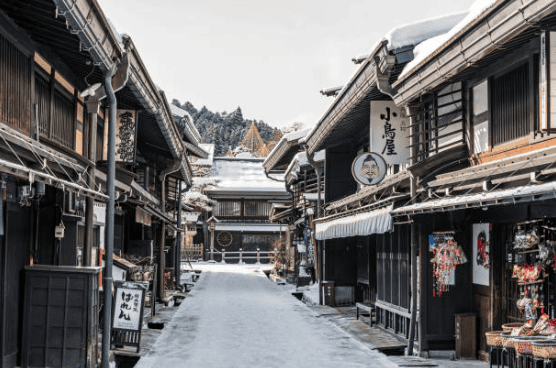
Around 500 years ago, if someone was called “Hida no Takumi,” they were considered a master carpenter, a reputation that became widely known. Furthermore, in some rakugo (comic stories) and ukiyo-e (woodblock prints), “Hida no Takumi” were depicted as exceptionally skilled carpenters. However, most of the forests in Hida were cut down by the 17th century, leading to depletion. In Hida, which was under the direct control of the Edo Shogunate (central government from the 16th to 19th century), reforestation policies were implemented relatively early, in the first half of the 18th century. The spirit of “Hida no Takumi” and the values of “knowing the trees and highlighting the characteristics of the wood” were passed down among the people of Hida.
One city that can be visited as a day trip from Toyama or Kanazawa is Takayama. Located about 100 km south of Toyama, Takayama Old Town is a popular tourist spot, along with Shirakawa-Go.
To reach Takayama, taking the train from Toyama is recommended. If coming from Tokyo or Kanazawa, take the Hokuriku Shinkansen to Toyama, then transfer to the Takayama Line with the JR Hida Limited Express heading toward Gero/Gifu, reaching Takayama in about 90 minutes.
Stopover to Shirakawa-Go

Takayama Station also serves as the terminal for those traveling to or from Shirakawa-Go. Just buy a Nohi Bus ticket and wait for the departure time. The bus ticket counter and waiting area are located right next to JR Takayama Station.
For those heading to other cities like Gifu, Nagoya, or Ogizawa, bus tickets can also be purchased here.
Takayama Old Town
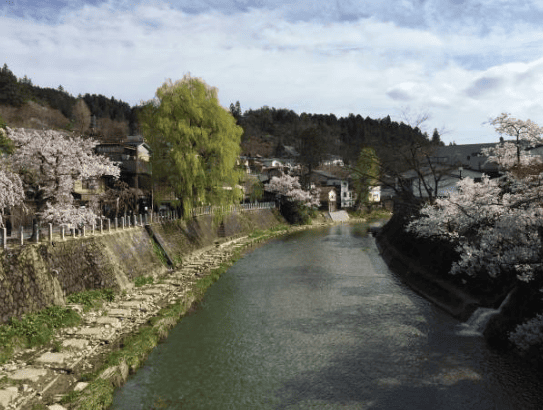
The main attraction in Takayama is the Old Town, a pedestrian-friendly area with well-preserved traditional Japanese buildings that are still functional.
It’s possible to walk to Old Town from Takayama Station, but since it’s still early and we want to save energy, we take a city bus instead. After 2-3 stops, we’re there.
On the way to Old Town, we pass the clear waters of the Miyagawa River, perfect for dipping our feet. Simply walk down the steps, take off your shoes and socks, and refresh in the cool, clear river water.
Old Town is a popular place for tourists to buy lovely souvenirs: umbrellas, Japanese fans, knives, and especially the famous sake from local breweries.
Hida Beef
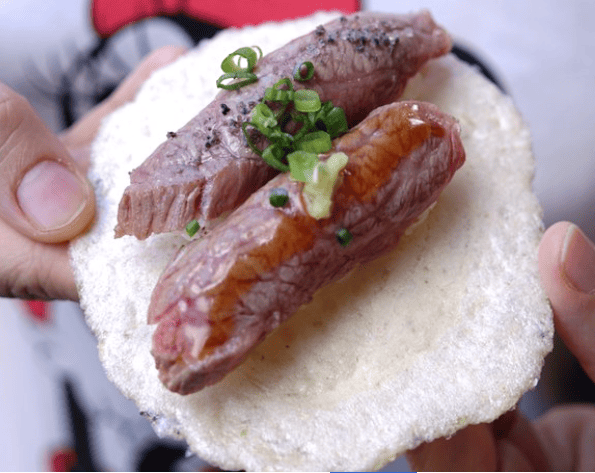
Aside from the globally renowned Wagyu beef, there is another type of beef unique to this region—Hida Beef. It’s quite pricey in steak form, but you can try a taste with Hida Beef Nigiri sushi (¥600).
The flavor is amazing, and the meat is so tender, as if the cows never had to work a day in their lives!
Takayama Jinya
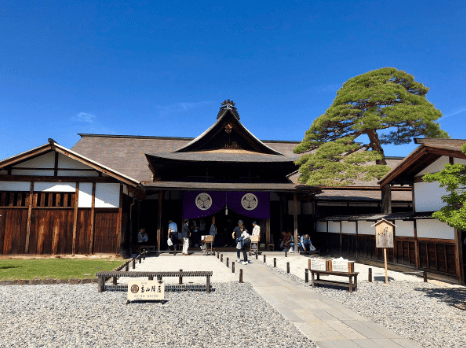
Before heading back to the station, we stop by Takayama Jinya. This former government office is now a museum. It’s a great place to visit, offering shade while it’s hot outside and a perfect backdrop for photos.
Public Foot Bath
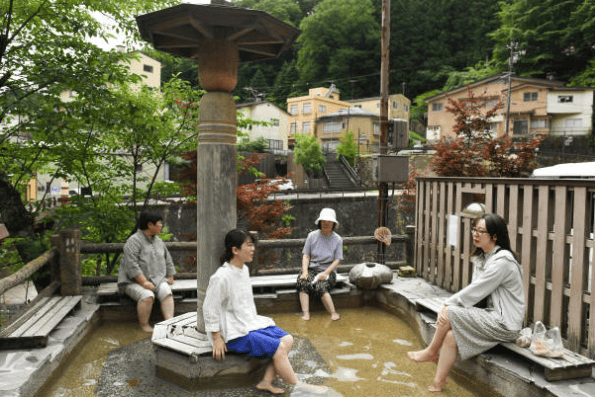
After a day of walking, if your feet are sore, don’t miss the chance to soak them in a public hot spring foot bath. The easiest one to reach is near JR Takayama Station, right in front of Takayama Ouan Inn. Exit the station, walk to the right, and continue until you near the traffic light.
